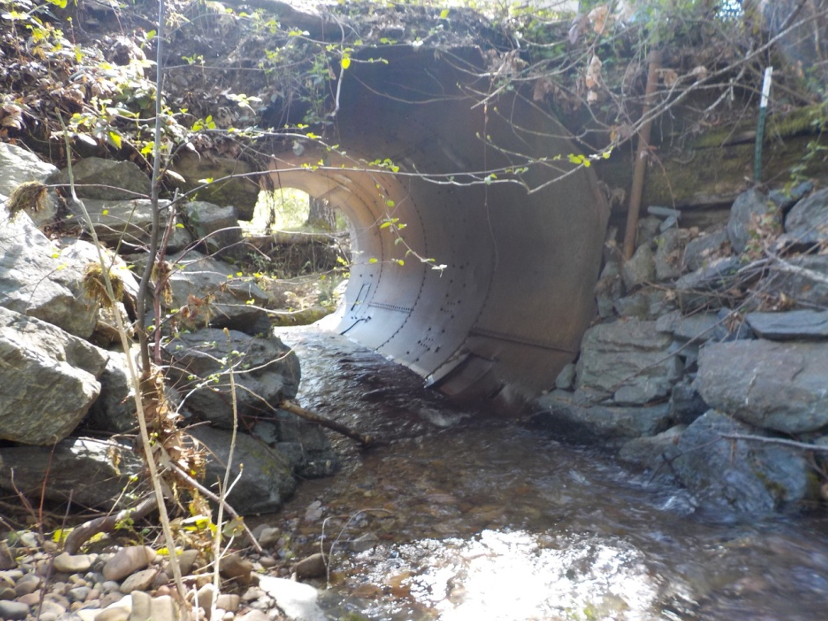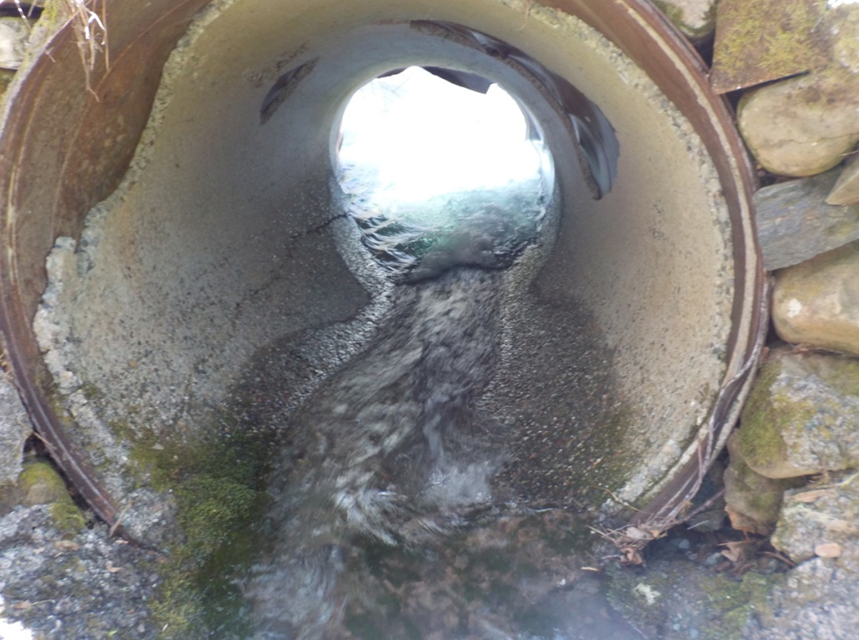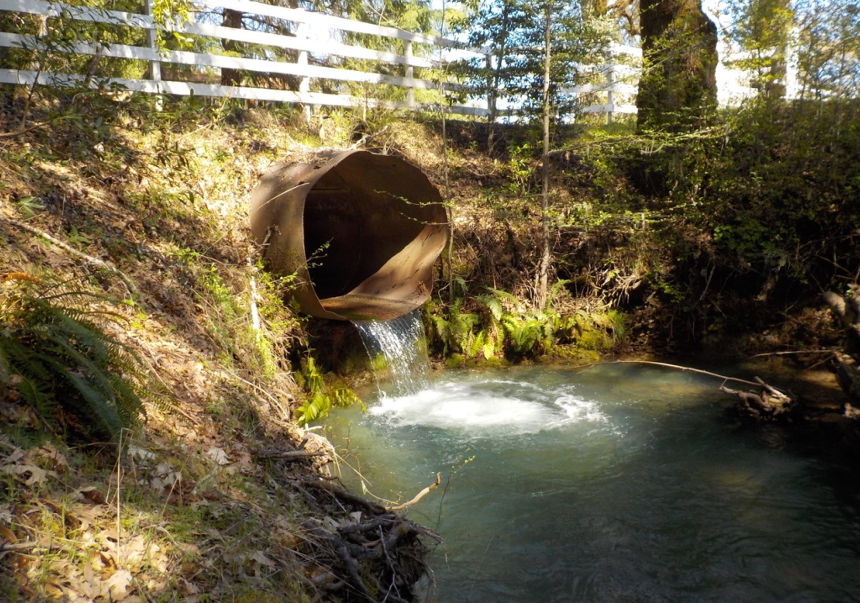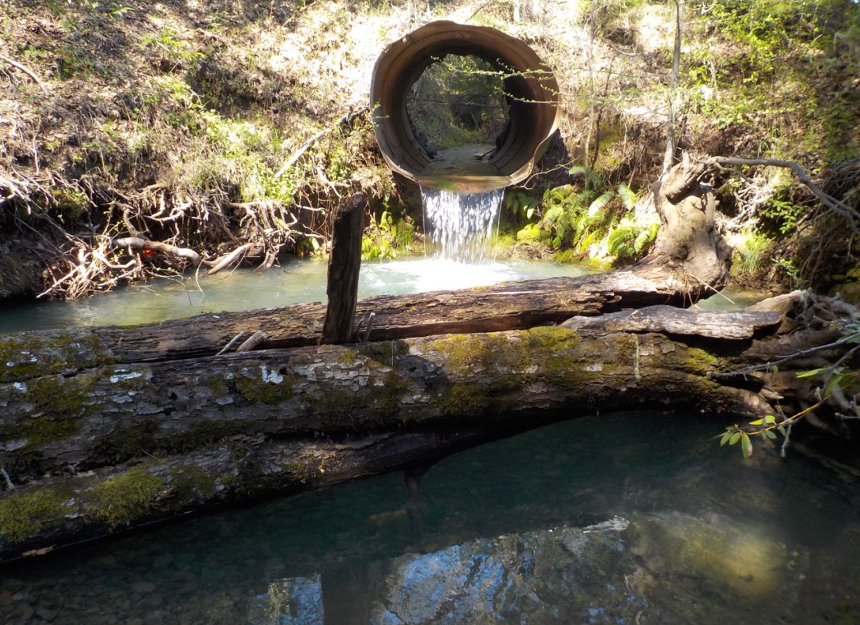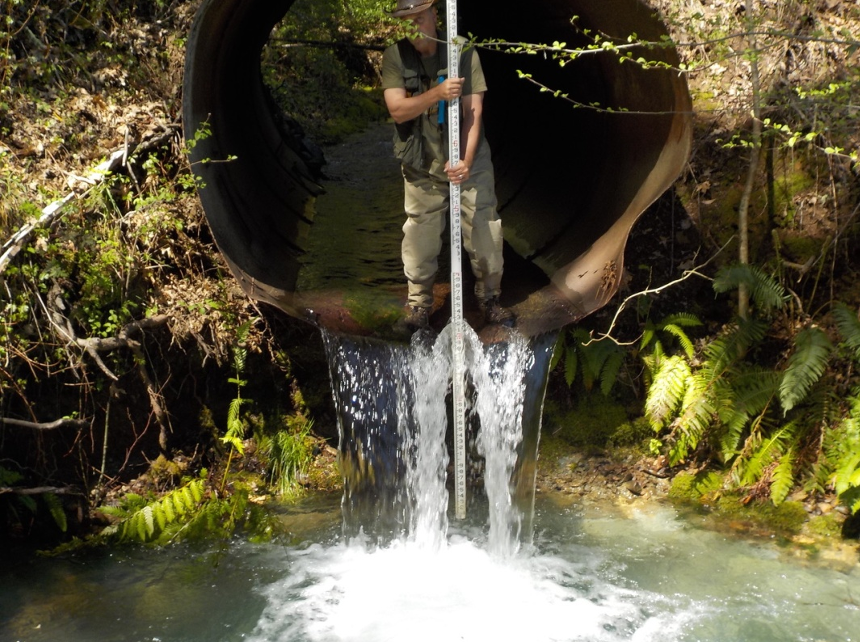Little Case Fish Passage Project
Project Lead: Eel River Watershed Improvement Group
Location of Project: 39.68385° N, -123.51815° W
Description of Project:
Little Case Creek is a tributary to Tenmile Creek, one of the largest tributaries to the South Fork Eel River. The South Fork Eel River is historically the largest producer of Coho salmon in the Eel River basin and is expected to play a key role in repopulating the watershed according to the Final Recovery Plan for the Southern Oregon/Northern California Coast Evolutionarily Significant Unit of Coho Salmon (National Marine Fisheries Service, 2014). Therefore, maximizing habitat available to Coho salmon within the South Fork Eel Watershed is of utmost importance. The available fish habitat in Little Case Creek has been fragmented by two culverts acting as partial barriers to adult salmonids and complete barriers to juveniles, blocking them from accessing one mile of spawning and rearing habitat (PAD ID #764910 and #764911).
The engineering firm Stillwater Sciences developed design plans to remove the culverts and replace them with bridges. CDFW, ERWIG and the landowners provided input as the designs were developed. Implementation of the 100% designs will result in unimpeded fish passage for all life stages of Coho and steelhead. ERWIG staff will oversee implementation of the project and obtain all permits for this project. A qualified subcontractor will conduct necessary surveys and a biologist will conduct fish relocation within the project sites. Stillwater Sciences will oversee construction activities. A qualified contractor will remove two culverts and replace them with bridges. The qualified contractor will also construct fish habitat structures and install rock bank protection and grade control structures. The CCC will anchor structures and plant willow. ERWIG will take pre and post project photos. Stillwater will evaluate completed project for fish passage.
Objectives:
- Replace two culverts with bridges that will pass Coho salmon and steelhead at all flows.
- Construct nine fish habitat structures made of 16 logs
- Plant 50 native trees along project reaches
Funding from the Fish Passage Forum will be used to pay for botanical, biological and cultural resource surveys, CDFW LSAA permitting, Mendocino County building permit and 401 certification fees and the staff time necessary to complete these tasks. ERWIG is seeking funding from CDFW for the rest of the project costs.


